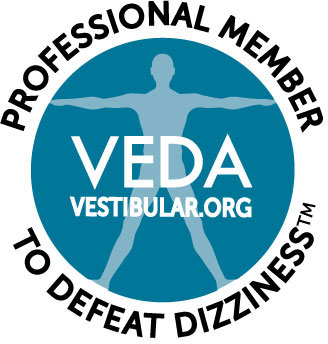Headaches and dizziness can occur with a wide range of medical conditions, which is why many patients suffering from these symptoms struggle to receive an accurate diagnosis and effective treatment. One disorder that can cause these symptoms is vertical heterophoria (VH), an eye misalignment condition. Unfortunately, VH is not widely understood in the medical community, so patients who have it are often misdiagnosed.

Dr. Cheryl Berger Israeloff at the Neuro Visual Center of New York is a pioneer in the diagnosis and treatment of VH and other eye misalignment conditions. In today’s post, we explain what VH is, what its symptoms are, and how Dr. Israeloff and her expert colleagues are able to diagnose and manage the condition.
What Is Vertical Heterophoria?
You have two eyes, but when you open them, you only see one image (hopefully). Did you ever wonder how that is possible—that two separate eyes produce one clear image? It is thanks to the intricate components of your eyes, which take the pictures seen by both eyes and turn them into one crisp image that is transmitted to your brain for processing.
This complex process relies on the perfect vertical alignment of your eyes. If your eyes are misaligned, then they will transmit two images—one slightly higher than the other—which your brain rejects. To “fix” the problem, your brain forces the tiny muscles in your eyes known as your extraocular muscles to correct the misalignment.
Your extraocular muscles are capable of correcting the unevenness, but they pay a price for it. Over time, these little muscles become strained from all the extra work, and this strain causes a range of uncomfortable and even painful symptoms. This is the condition known as VH.
What Are the Symptoms?
Common symptoms of VH include the following:
-
Migraines and headaches
-
Dizziness and vertigo
-
Anxiety, particularly in crowded places
-
Trouble concentrating
-
Difficulty reading
-
Blurred or shaky vision
-
A feeling of disorientation, especially when in a moving vehicle
-
Pain when moving your eyes
-
Pain in sinus area
-
Poor coordination or clumsiness
-
Light sensitivity
Because many of these symptoms overlap with other better-known medical conditions, patients with VH are often misdiagnosed. For example, a child who has trouble concentrating in school and is falling behind may be diagnosed with a learning disability, when VH is actually the culprit.
How We Diagnose and Treat VH
At Neuro Visual Center of New York, our experienced team uses state-of-the-art technology to detect the miniscule misalignments in the eyes that signal VH and other eye misalignment disorders. We treat the condition by prescribing special aligning lenses which correct the misalignment in the eyes, thereby alleviating or even totally eliminating all uncomfortable symptoms. Our treatment has drastically improved the quality of life of hundreds of our patients over the years.
If you or a loved one has been experiencing any of the symptoms above, we strongly encourage you to pursue testing for VH. Call us today at (516) 224-4888 to schedule an appointment. We look forward to helping you.





